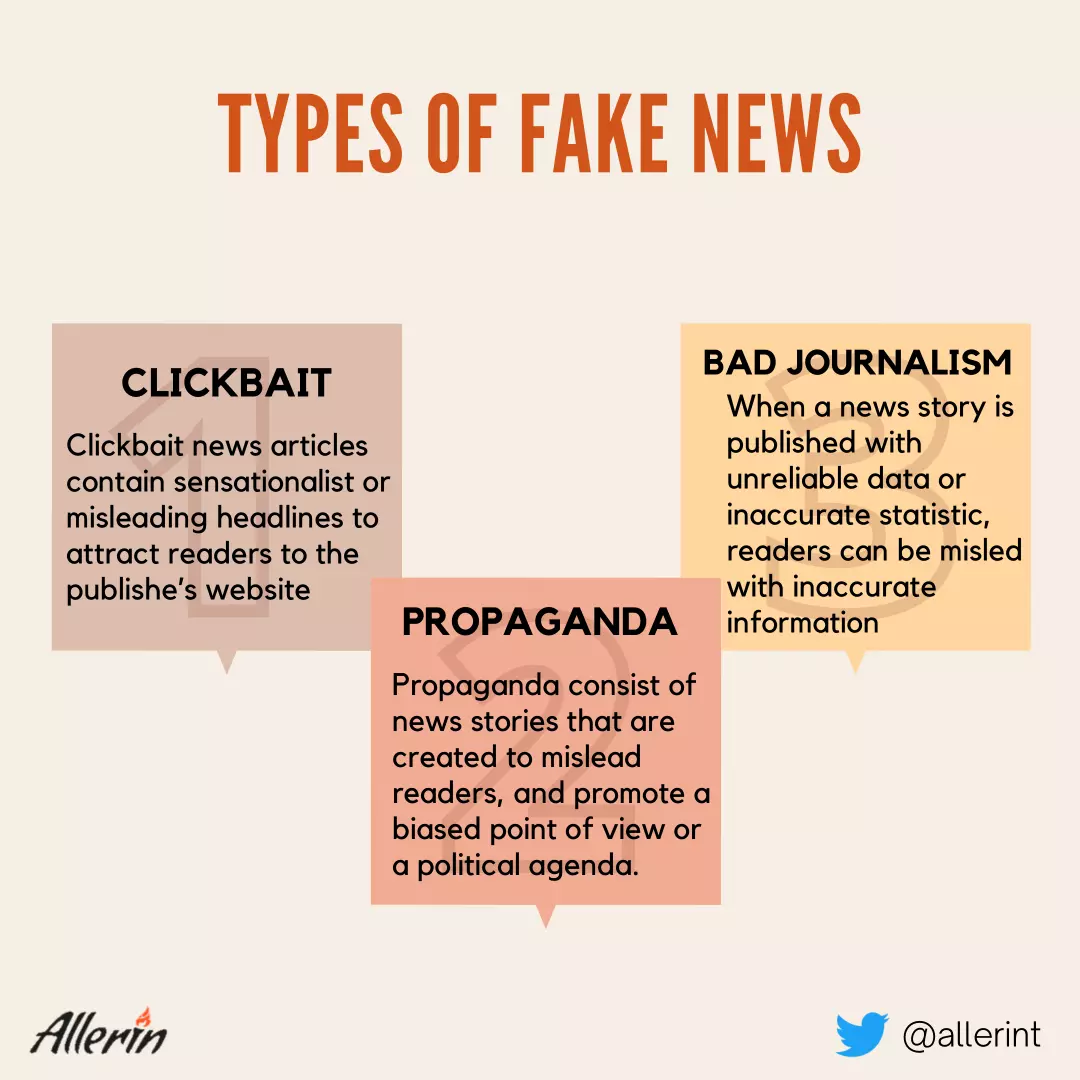The rise of social media is making traditional news media obsolete.
But, social media has also led to the epidemic of fake news. So, is it possible to spot fake news on social media?
Before the introduction of the Internet, the news was consumed via television, or through radio and newspapers. The sources of news were limited and more regulated. In the present day, the news is available at our fingertips 24x7, thanks to our phones. Multiple news sources are available on the Internet and news media is more independent there. Instead of a single dedicated section on television or newspaper, various news sources on the Internet provide in-depth information about different niches and topics like sports, technology, business, politics, and much more. The Internet is surely responsible for increasing our consumption of news. And most of the Internet news is viewed through social media channels like Facebook. But, the downside to these new news portals is the heavy distortion of facts and the spread of false propaganda. Fake accounts are used to spread the news that manipulates and misinforms people with fake statistics and narratives. With a large number of news portals on social media today, it has become really difficult to distinguish ‘real’ news from fake one.
What is Fake News?
Fake news is not a new phenomenon, as the governments of various countries, to manipulate the masses on various occasions in the past, have used it. But, the term, “Fake News” gained traction after Donald Trump started tweeting and talking about it in press conferences. Fake news typically is news, stories, or hoaxes created to deliberately misinform or deceive readers. Moreover, fake news is commonly used to influence people’s views, push a political agenda, or cause confusion, and can often be a profitable business for online publishers. And when social media is used to share fake news, it makes it even more complex to spot it. For example, in 2017, multiple fake news websites claimed that Queen Elizabeth removed the Obamas from Prince Harry and Meghan Markle’s Royal Wedding guest list. After fact-checking the claims, Snopes found that the news was only a conspiracy to belittle the Obamas.
Professional and trustworthy news sources need to follow a strict code of practice. But, after the rise of the Internet, news stories are shared with little to no regulations or editorial standards. Besides, the information overload generated by the overwhelming amount of news sources has made it incredibly complicated to spot fake news. Fake news is shared in many different formats, of which the popular ones include:
Clickbait
Clickbait news articles contain sensationalist or misleading headlines. The stories are deliberately fabricated to drive clicks to the publisher’s website to generate ad revenue. Clickbait headlines are used to gain more visitors and spread the news on social media websites quickly.
Propaganda
Propaganda consists of news stories that are created to mislead readers and promote a biased point of view or a political agenda. Many readers have a tendency to click on news articles that align with their beliefs or biases. Fake news takes advantage of the biases by displaying news that supports our biases on our social media pages.
Bad Journalism
When a news story is published with unreliable data or inaccurate statistics, readers can be misled with inaccurate information. Sometimes, reporters and journalists publish news articles that are not well researched, which can misinform the audience.
How Do Fake News and Social Media Work Together?
Social media has become one of the major platforms for consuming news and information. Additionally, it is convenient for both users and news portals to share news on social media to gain more readers. Social media platforms, such as Facebook, create profiles of their users based on their likes, dislikes, shares, and other activities. Facebook profiles provide insight into a user’s beliefs and their complaints. Hence, fake news sources and fake accounts target users based on their profile pages. Meanwhile, gullible readers fail to spot fake news and continue to get misinformed by the fake news sources. People who create fake news only have to figure out what they believe in and the grievances they have. The fake news sources construct a fake narrative to align with your beliefs and support their news story with alternative facts, or sometimes, completely incorrect statistics. Fake news sources excel at constructing a compelling lie to misinform the target audience and make it difficult for the readers to spot fake news. Moreover, users can publish their opinion pieces on social media websites, which can be full of misleading information. The fake news website is a profitable business model that generates ad revenues for every visitor on the website. Furthermore, fake news sources are funded by certain political parties during elections to manipulate citizens into voting for their party.
How to Spot Fake News on Social Media?

Critical thinking and accurate information have become a necessity to spot fake news on social media. With the increasing number of news portals that are being created every day, it has become even more complicated to find credible sources. Facebook and Google have added reporting and flagging tools to their services to spot fake news. Major news sources, such as the BBC, are coming up with fact-checking websites to help people verify the information that they are reading. Artificial intelligence has the potential to spot fake news effectively. Machine learning and artificial intelligence use natural language processing and text analysis to analyze media bias and fact-check articles. Furthermore, algorithms can identify linguistic cues that are extensively used by websites that push fake news. Blockchain technology is also being used to spot fake news. Social media websites can deploy blockchain technology to verify the identity of social media profiles.
Besides, blockchain can help recognize journalist and publication bias by tracking their reputation. Blockchain technology has the ability to crowdsource content verification and incentivize people for their time and effort. Together, artificial intelligence and blockchain can prove beneficial to spot fake news and reduce the impact of fake news on social media. We need more regulations on social media to control the creation and sharing of fake news, which can be enforced by the law. But, a long time will be required to create effective regulations, and until then, measures can be taken by us to spot fake news, such as:
1. Checking the Sources
While reading any news story, check if the source is credible. Find out information about the author of the news story to understand the author’s bias. Furthermore, reading through more news stories from any particular news publication will help you analyze the publication’s bias.
2. Reading Beyond the Headline
Fake news stories often have sensationalist and clickbait headlines to drive more clicks on their website. After reading through the entire story, it can be seen that the information is fabricated in the story.
3. Finding Other Sources and Facts
After reading a fake news story, search for the same story on other reliable news portals. In fake news articles, the statistics, dates, and analytics are typically inaccurate or outdated. Hence, it is essential to check whether the data is accurate and to compare the article with other credible sources.
The propagation of fake news has resulted in catastrophic consequences like mob lynching, manipulating elections, and hateful propaganda towards minorities. Social media websites need more regulations and fact-checking tools. Moreover, we need stringent regulations for creating and running news portals. It has become essential to spread awareness about fake news and discourage people from believing everything they read on the Internet.




Leave your comments
Post comment as a guest